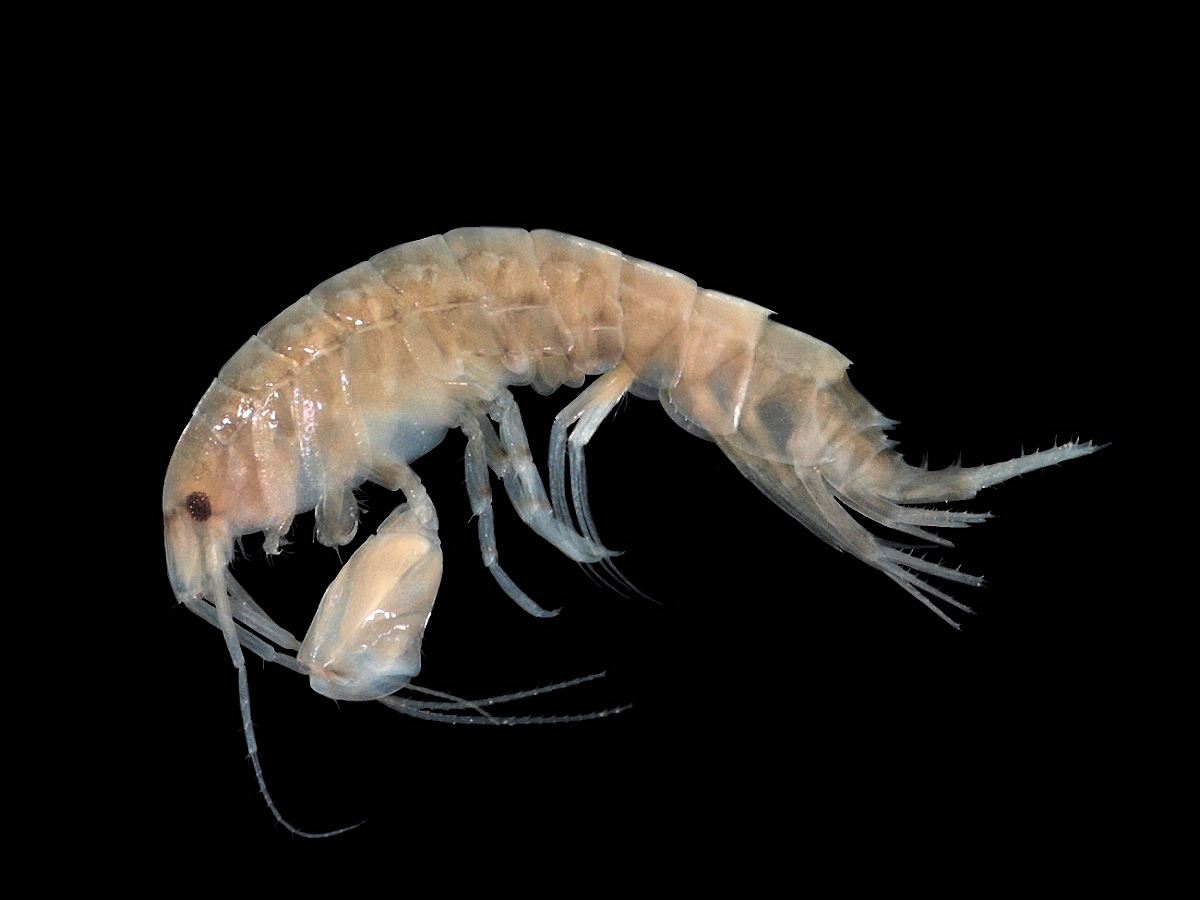|
Aatolana Springthorpei
''Aatolana springthorpei'' is a species of crustaceans in the family Cirolanidae, first described by Stephen John Keable in 1998. It is benthic shrimp found in tropical waters at depths of 200 m to 203 m on the continental shelves of Queensland and New South Wales. Like other species in this genus it is a scavenger. The males are similar to the females, and the species is most similar to '' A rapax.'' References External links ''Aatolana springthorpei'' occurrence datafrom GBIF The Global Biodiversity Information Facility (GBIF) is an international organisation that focuses on making scientific data on biodiversity available via the Internet using web services. The data are provided by many institutions from around the ... {{Taxonbar, from=Q936723 Cymothoida Crustaceans of Australia Crustaceans described in 1998 ... [...More Info...] [...Related Items...] OR: [Wikipedia] [Google] [Baidu] |
Crustacean
Crustaceans (Crustacea, ) form a large, diverse arthropod taxon which includes such animals as decapods, seed shrimp, branchiopods, fish lice, krill, remipedes, isopods, barnacles, copepods, amphipods and mantis shrimp. The crustacean group can be treated as a subphylum under the clade Mandibulata. It is now well accepted that the hexapods emerged deep in the Crustacean group, with the completed group referred to as Pancrustacea. Some crustaceans ( Remipedia, Cephalocarida, Branchiopoda) are more closely related to insects and the other hexapods than they are to certain other crustaceans. The 67,000 described species range in size from '' Stygotantulus stocki'' at , to the Japanese spider crab with a leg span of up to and a mass of . Like other arthropods, crustaceans have an exoskeleton, which they moult to grow. They are distinguished from other groups of arthropods, such as insects, myriapods and chelicerates, by the possession of biramous (two-parted) l ... [...More Info...] [...Related Items...] OR: [Wikipedia] [Google] [Baidu] |
Cirolanidae
The Cirolanidae are a family of isopod crustaceans, including these genera: *'' Aatolana'' Bruce, 1993 *''Annina'' Budde-Lund, 1908 *'' Antrolana'' Bowman, 1964 *'' Aphantolana'' Moore & Brusca, 2003 *'' Arubolana'' Botosaneanu & Stock, 1979 *'' Atarbolana'' Bruce & Javed, 1987 *'' Bahalana'' Carpenter, 1981 *'' Baharilana'' Bruce & Svavarsson, 2003 *'' Bathylana'' Kensley, 1989 *'' Bathynomus'' A. Milne-Edwards, 1879 *'' Booralana'' Bruce, 1986 *'' Calyptolana'' Bruce, 1985 *'' Cartetolana'' Bruce, 1981 *'' Ceratolana'' Bowman, 1977 *'' Cirolana'' Leach, 1818 *'' Cirolanides'' Benedict, 1896 *'' Colopisthus'' Richardson, 1902 *'' Conilera'' Leach, 1818 *'' Conilorpheus'' Stebbing, 1905 *'' Creaseriella'' Rioja, 1953 *'' Dodecalana'' Carpenter, 1994 *'' Dolicholana'' Bruce, 1986 *''Eurydice'' Leach, 1815 *'' Eurylana'' Jansen, 1981 *'' Excirolana'' Richardson, 1912 *'' Exumalana'' Botosaneanu & Iliffe, 2003 *'' Faucheria'' Dollfus & Viré, 1905 *'' Gnatholana'' Barnard, 1920 *'' H ... [...More Info...] [...Related Items...] OR: [Wikipedia] [Google] [Baidu] |
Stephen John Keable
Stephen or Steven is a common English first name. It is particularly significant to Christians, as it belonged to Saint Stephen ( grc-gre, Στέφανος ), an early disciple and deacon who, according to the Book of Acts, was stoned to death; he is widely regarded as the first martyr (or " protomartyr") of the Christian Church. In English, Stephen is most commonly pronounced as ' (). The name, in both the forms Stephen and Steven, is often shortened to Steve or Stevie. The spelling as Stephen can also be pronounced which is from the Greek original version, Stephanos. In English, the female version of the name is Stephanie. Many surnames are derived from the first name, including Stephens, Stevens, Stephenson, and Stevenson, all of which mean "Stephen's (son)". In modern times the name has sometimes been given with intentionally non-standard spelling, such as Stevan or Stevon. A common variant of the name used in English is Stephan ; related names that have found som ... [...More Info...] [...Related Items...] OR: [Wikipedia] [Google] [Baidu] |
Benthic Zone
The benthic zone is the ecological region at the lowest level of a body of water such as an ocean, lake, or stream, including the sediment surface and some sub-surface layers. The name comes from ancient Greek, βένθος (bénthos), meaning "the depths." Organisms living in this zone are called benthos and include microorganisms (e.g., bacteria and fungi) as well as larger invertebrates, such as crustaceans and polychaetes. Organisms here generally live in close relationship with the substrate and many are permanently attached to the bottom. The benthic boundary layer, which includes the bottom layer of water and the uppermost layer of sediment directly influenced by the overlying water, is an integral part of the benthic zone, as it greatly influences the biological activity that takes place there. Examples of contact soil layers include sand bottoms, rocky outcrops, coral, and bay mud. Description Oceans The benthic region of the ocean begins at the shore line ... [...More Info...] [...Related Items...] OR: [Wikipedia] [Google] [Baidu] |
Queensland
) , nickname = Sunshine State , image_map = Queensland in Australia.svg , map_caption = Location of Queensland in Australia , subdivision_type = Country , subdivision_name = Australia , established_title = Before federation , established_date = Colony of Queensland , established_title2 = Separation from New South Wales , established_date2 = 6 June 1859 , established_title3 = Federation of Australia, Federation , established_date3 = 1 January 1901 , named_for = Queen Victoria , demonym = , capital = Brisbane , largest_city = capital , coordinates = , admin_center_type = Administration , admin_center = Local government areas of Queensland, 77 local government areas , leader_title1 = Monarchy of Australia, Monarch , leader_name1 = Charles III , leader_title2 = Governor of Queensland, Governor , leader_name2 = Jeannette Young , leader_title3 = Premier of Queensland, Premier , leader_name3 = Annastacia Palaszczuk (Australian Labor Party (Queensland Branch), AL ... [...More Info...] [...Related Items...] OR: [Wikipedia] [Google] [Baidu] |
New South Wales
) , nickname = , image_map = New South Wales in Australia.svg , map_caption = Location of New South Wales in AustraliaCoordinates: , subdivision_type = Country , subdivision_name = Australia , established_title = Before federation , established_date = Colony of New South Wales , established_title2 = Establishment , established_date2 = 26 January 1788 , established_title3 = Responsible government , established_date3 = 6 June 1856 , established_title4 = Federation , established_date4 = 1 January 1901 , named_for = Wales , demonym = , capital = Sydney , largest_city = capital , coordinates = , admin_center = 128 local government areas , admin_center_type = Administration , leader_title1 = Monarch , leader_name1 = Charles III , leader_title2 = Governor , leader_name2 = Margaret Beazley , leader_title3 = Premier , leader_name3 = Dominic Perrottet ( Liberal) , national_representation = Parliament of Australia , national_representation_type1 = Sen ... [...More Info...] [...Related Items...] OR: [Wikipedia] [Google] [Baidu] |
Aatolana Rapax
''Aatolana rapax'' is a species of crustaceans in the family Cirolanidae, first described by Niel L. Bruce in 1993. It is benthic shrimp found in tropical waters at depths of 150 m to 200 m off the coasts of Papua New Guinea, Western Australia, the Northern Territory, and Queensland. References External links ''Aatolana rapax'' occurrence datafrom GBIF The Global Biodiversity Information Facility (GBIF) is an international organisation that focuses on making scientific data on biodiversity available via the Internet using web services. The data are provided by many institutions from around the ... {{Taxonbar, from=Q2728558 Cymothoida Crustaceans of Australia Crustaceans described in 1993 Taxa named by Niel L. Bruce ... [...More Info...] [...Related Items...] OR: [Wikipedia] [Google] [Baidu] |
Global Biodiversity Information Facility
The Global Biodiversity Information Facility (GBIF) is an international organisation that focuses on making scientific data on biodiversity available via the Internet using web services. The data are provided by many institutions from around the world; GBIF's information architecture makes these data accessible and searchable through a single portal. Data available through the GBIF portal are primarily distribution data on plants, animals, fungi, and microbes for the world, and scientific names data. The mission of the GBIF is to facilitate free and open access to biodiversity data worldwide to underpin sustainable development. Priorities, with an emphasis on promoting participation and working through partners, include mobilising biodiversity data, developing protocols and standards to ensure scientific integrity and interoperability, building an informatics architecture to allow the interlinking of diverse data types from disparate sources, promoting capacity building and ca ... [...More Info...] [...Related Items...] OR: [Wikipedia] [Google] [Baidu] |
Cymothoida
Cymothoida is the name of a suborder of isopod crustaceans with a mostly carnivorous or parasitic lifestyle. It contains more than 2,700 described species in four superfamilies. Members of the suborder are characterised by their specialised mouthparts which include a mandible with a tooth-like process which is adapted for cutting or slicing. Classification Cymothoida contains these superfamilies and families: *Superfamily Anthuroidea Leach, 1814 **Antheluridae Poore & Lew Ton, 1988 **Anthuridae Leach, 1814 **Expanathuridae Poore, 2001 **Hyssuridae Wägele, 1981 **Leptanthuridae Poore, 2001 **Paranthuridae Menzies & Glynn, 1968 *Superfamily Cymothooidea Leach, 1814 ** Aegidae White, 1850 **Anuropidae Stebbing, 1893 ** Barybrotidae Hansen, 1890 ** Cirolanidae Dana, 1852 **Corallanidae Hansen, 1890 **Cymothoidae Leach, 1818 ** Gnathiidae Leach, 1814 **Protognathiidae Wägele & Brandt, 1988 **Tridentellidae Bruce, 1984 *Superfamily Cryptoniscoidea Kossmann, 1880 ** Asconiscidae Bon ... [...More Info...] [...Related Items...] OR: [Wikipedia] [Google] [Baidu] |
Crustaceans Of Australia
Crustaceans (Crustacea, ) form a large, diverse arthropod taxon which includes such animals as decapods, seed shrimp, branchiopods, fish lice, krill, remipedes, isopods, barnacles, copepods, amphipods and mantis shrimp. The crustacean group can be treated as a subphylum under the clade Mandibulata. It is now well accepted that the hexapods emerged deep in the Crustacean group, with the completed group referred to as Pancrustacea. Some crustaceans ( Remipedia, Cephalocarida, Branchiopoda) are more closely related to insects and the other hexapods than they are to certain other crustaceans. The 67,000 described species range in size from '' Stygotantulus stocki'' at , to the Japanese spider crab with a leg span of up to and a mass of . Like other arthropods, crustaceans have an exoskeleton, which they moult to grow. They are distinguished from other groups of arthropods, such as insects, myriapods and chelicerates, by the possession of biramous (two-parted) l ... [...More Info...] [...Related Items...] OR: [Wikipedia] [Google] [Baidu] |





